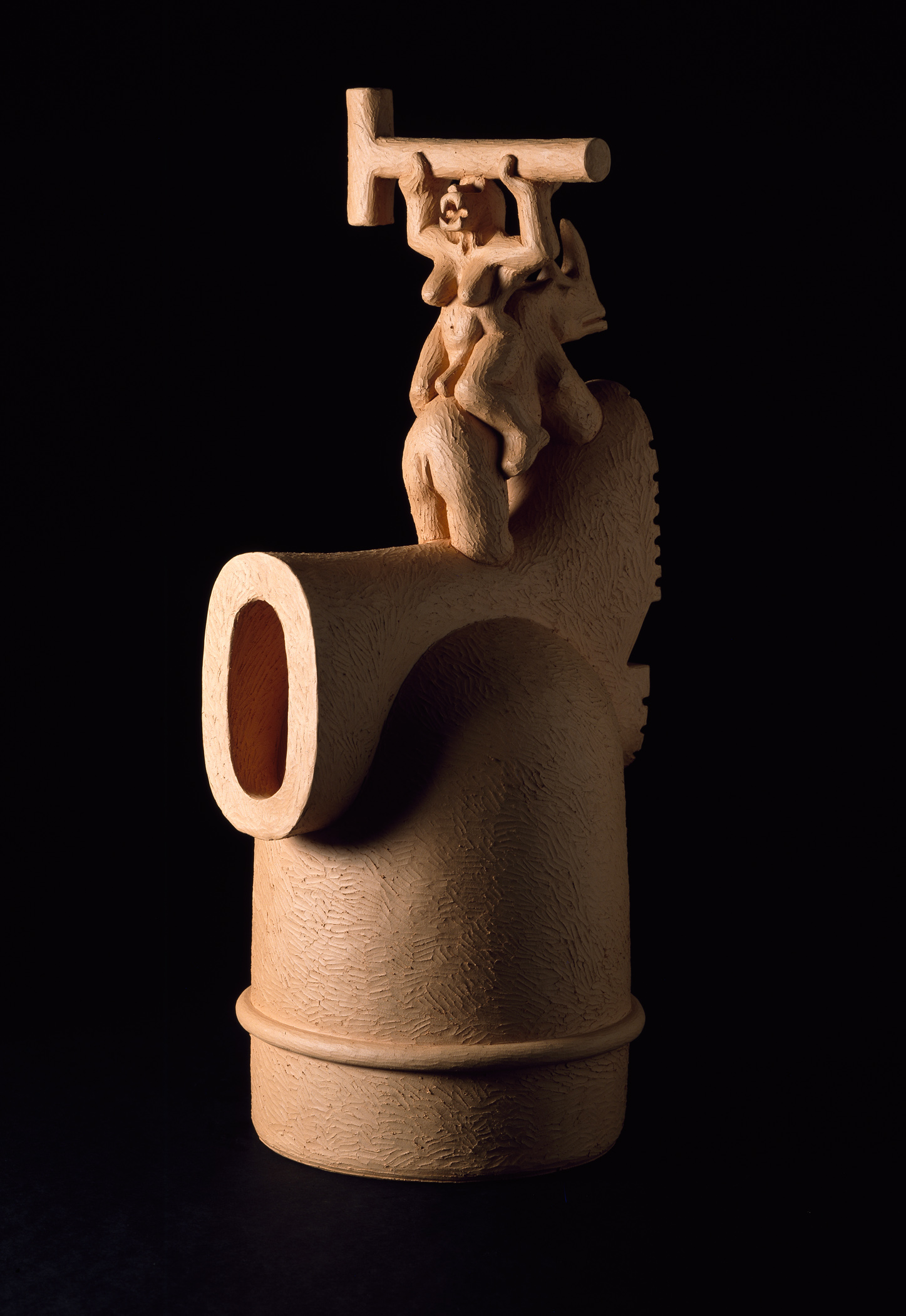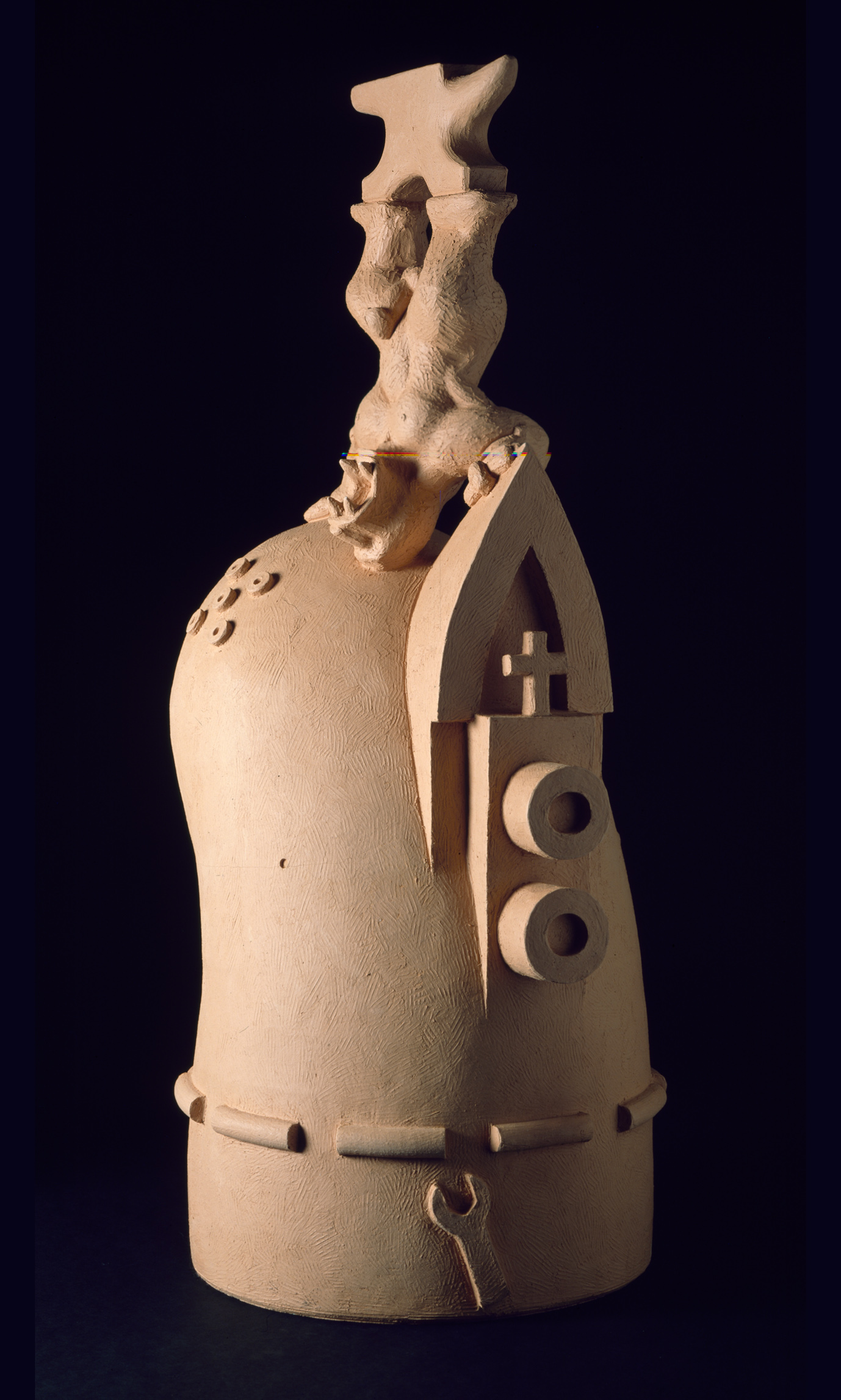1970 -1980
Select works: 1980s
Black Drawings: 1980 - 1983Payne devised a number of soldered wire drawings to act as stencils or drawing aids in the production of the majority of the casein and aquarelle works. Mark making occurred between the open spaces and single line marking on either side of the grid.

Soldered straightened galvanized wire drawing. 1980.
Works from this series were produced for his Grahamstown Festival Young Artists Award exhibition, 1985. All works, Caran de Ache aquarelle on black casein primed board.

Merlin. 1982.

Sonar. 1982.

Galileo. 1983.

Gharbasana. 1983.

Goliath. 1982.

Hercules. 1983.

Houdini. 1983.

Mars. 1983.

Hour Glass. 1983. Stainless steel, copper and Duco. (Destroyed)
The flat grid stencils used as drawing aids for the casein and aquarelle drawings formed the basis for three dimensional work.

Hour Glass. 1983. (Detail)
Stacked Reliefs: 1983 - 1985
This series (post Proto-Rhino) was produced in Payne's Hekpoort studio in the Magaliesbug nature reserve outside Johannesburg.

Proto-rhino. 1983. Collection: Louis Schachat.
Made for Tributaries curated by Ricky Burnett.

Thursday 31st May 1985. (1985). Collection: SASOL.

Wednesday 25th April 1985. (Destroyed)

Saturday 13 May 1985. 1985. Collection: University of North West.

Tuesday 1st May 1985. (1985) Collection: the artist.

A number of the Stacked Relief works were destroyed, mainly due to storage constraints. Four were destroyed by flood damage in Cape Town and Johannesburg. One was destroyed by the artist.
Friday 25th May 1985. 1985. (Destroyed)

Medium: Acrylic, wool felt, copper nails, plywood, canvas and polystyrene.
Thursday 19th April 1985. 1985. (Destroyed)

Monday 7th May 1985. (1985). Collection: Johannesburg Art Gallery.

A column for Tolstoy. 1985. (Destroyed by the artist)

Detail: A column for Tolstoy.
Malchemy. From the Penumbra series: 1985 - 1986
Exhausted by the material and optical complexity of the Stacked Relief works Payne decided to move to simple materials, in this case hand cut paper stencils and matt black spray can paint. Much of his iconographic tokens remain in these works however he expands the industrial motifs to include medieval symbols. The spatial geography implies the viewer inhabits both a conventional and ariel prospect position in a chaotic apocalyptic landscape.

Malchemy. 1985. Nitrocellulose lacquer on BFK Rives. (Lost in Amsterdam Gallery)

Malchemy. 1985. Nitrocellulose lacquer on BFK Rives. (Lost in Amsterdam Gallery)

Malchemy. 1985. Nitrocellulose lacquer on BFK Rives. (Lost in Amsterdam Gallery)
Mafikeng Heads: 1987 - 1988
Payne enters a contract lectureship at the University of Bophuthatswana (now University of the North West). He teaches sculpture and history of art. He is exposed to African exiles, mostly from north Africa who are employed by the university who assist him in a closer examination of African art and history. He spends two years at the university and produces his series entitled Mafikeng Heads named after the capital of erstwhile Bophuthatswana, Mafikeng and in homage to the Lydenburg Heads, the oldest Iron Age sculptures discovered in South Africa. The sculptures are made in the traditional coil method and bisque fired. Firing them in a traditional pit would have been a a closer homage to the original Iron Age sculptors technique but was not considered as the risk of cracking remained high. Nine sculptures in all were made. One remains lost in storage somewhere in Johannesburg. The Johannesburg Art Gallery and the Durban Art Gallery have one each in their collection.
Preliminary drawing for Mafikeng Heads, 1987 - 1988.Link to preliminary drawings for the sculptures: Drawings_for_Mafikeng_Heads.pdf
Mafikeng Head 7 & 8.
Mafikeng Head 9.



